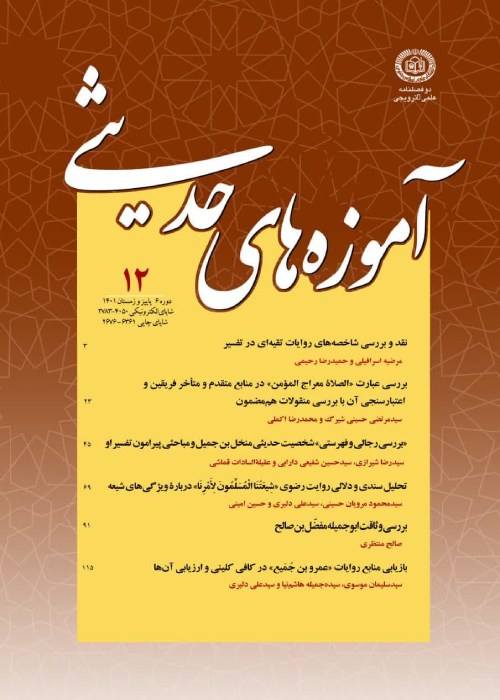Analyzing the Shīʿa approach to the Ḥadīth of "My Companions Are Like the Stars" (Arabic: اصحابی کالنجوم, Romanized: Aṣḥābī ka 'l-nujūm)
The ḥadīth of "my companions are like the stars" (Arabic: اصحابی کالنجوم, Romanized: Aṣḥābī ka 'l-nujūm) and some of the aḥādīth (Arabic: احادیث, singular: ḥadīth) related to it have been disputed and refuted and proven in terms of wording and text by Shīʿa and Sunnī for centuries and these conflicts of discussions are seen in different Islamic sciences or independently in Islamic heritage, and although this ḥadīth and related aḥādīth are from Sunnī sect and most of the disputes have been carried out by them [Sunnī sect] and had different conflicted views and Shīʿa have reacted to it at the same time and while participating in these conflicts had approaches and positions which have been sometimes conflicting with it. But what were these conflicts and approaches? What are their credentials? And what are the consequences of these approaches and positions? It is attempted in this article by a descriptive-analytical and library method to answer the above questions while presenting historical disputes and Shīʿa positions and reveals that these conflicts and approaches are not coherent and include rejection and proof like Sunnī sect, along with justification of ḥadīth and aḥādīth related to it, and the reasons for rejecting it by Shīʿa as a fabricated ḥadīth or proving it along with the definition of the meaning of "companions" (Arabic: اصحاب; aṣḥāb) to the companions Ahl al-Bayt (a) (Arabic: اهل البیت, lit. 'people of the house') or non-deviant companions were too many and the most important of them is lack of the absolute justice of the Companions, conflict with the early history of Islam, the existence of conflicting aḥādīth and citing the views of Sunnī critics about such aḥādīth, and although Shīʿa justifications for this ḥadīth may be acceptable, but, the reasons for rejecting the ḥadīth as a fabricated ḥadīth are very high, strong and unquestionable, and these justifications rely on a few aḥādīth from the Infallible (Arabic: المعصوم, al-Maʿṣūm), unfortunately, relying on a hadith that is forged and fake itself, which is justified by the distortion, but, also the fakeness of these aḥādīth.
- حق عضویت دریافتی صرف حمایت از نشریات عضو و نگهداری، تکمیل و توسعه مگیران میشود.
- پرداخت حق اشتراک و دانلود مقالات اجازه بازنشر آن در سایر رسانههای چاپی و دیجیتال را به کاربر نمیدهد.



